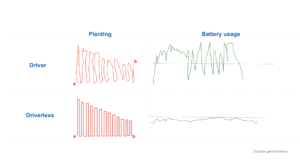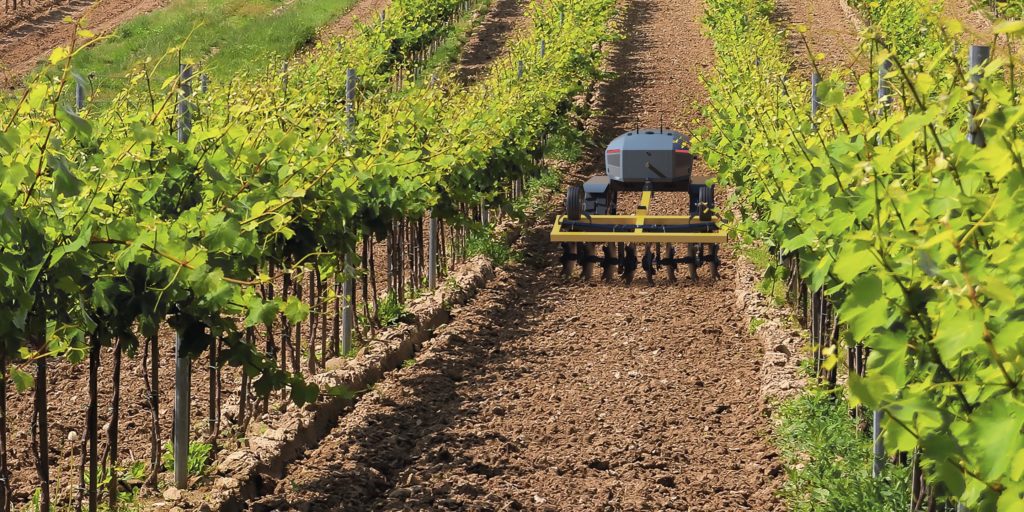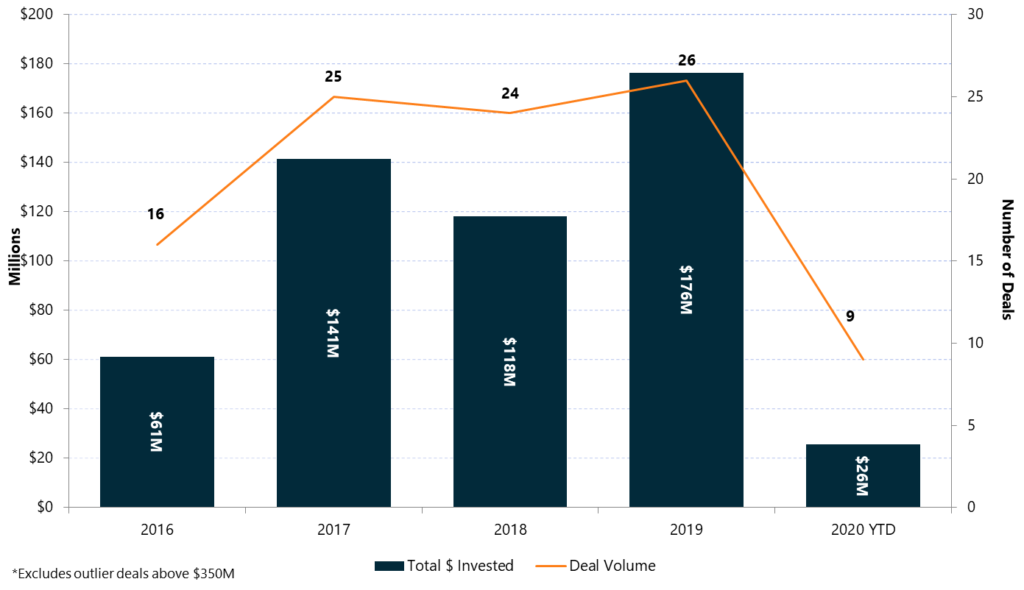Automating Agriculture: Innovations in Farm Robots
Recent COVID experience has heightened concerns about food security and its supply chains. This is largely due to workforce-related issues, particularly worker availability and productivity, as well as their impact on food safety. Robotics and automation are clearly emerging as solutions and are likely to experience accelerating adoption and usage by farming and food production companies alike.
What can automation provide? Benefits can include:
· Quality and accuracy of process
· Reduced cycle times and increased productivity
· Improved compliance in industrial systems
· Heightened cleanliness and sanitation
· Reduced crop maintenance and harvesting cycle times
· Operating cost savings.
In agriculture, there are some strong amplifiers of these benefits, including a global farm labor crisis due to low wages, difficult conditions and the trend of workforces migrating to cities. Plus, environmental concerns put pressure on farm systems to apply irrigation, fertilizers, pesticides and other farm inputs more precisely. Finally, there are concerns about food safety and supply chain resiliency.
Farmers are interested in farm robots because robots can offer both environmental benefits as well as a solution to the labor crisis. Supermarkets are increasingly setting strong carbon targets for their supply chains and, in turn, pressuring their providers to move towards carbon neutrality. For example, Aldi, the European supermarket, recently achieved carbon neutrality in its UK and Ireland operations. Though labor shortages exist across the board in farming, the farming of fruits and vegetables is particularly susceptible to labour shortfalls due to the difficulty in recruiting suitable workers. In Denmark, regulations limit tractor operators to a six hour shift per day. This means two drivers are required for two shifts in order to do a full day’s work. With costs of $40 per hour/per driver, operational costs are high and often rely on family members, which reduces the scalability of farming practices.
Workhorses for Courses
The requirements for farm robots differ according to function, crop type and the geography of the land they will drive on. Here are a few examples:
- Ztractor , the electric tractor manufacturer based in Palo Alto, California, develops agricultural machinery, technology and services for growers to increase farming efficiency. Whether individual growers or agriculture producers with large acreage, Ztractor is focused on reducing the environmental footprint of agriculture practice while improving crop management. The company is partnering with Tier-1 OEMs to manufacture tractors in North America and Europe. Currently, Ztractor’s first model, the Bearcub 24, is available for online orders, with the next two models, Mars 45 and Superpilot 125, available for pre-orders in 2021 and 2022 respectively.

Ztractor is also developing software and hardware for the automation and electrification of its self-driving electric tractors which aims to reduce the 15-22% inefficiency caused by human error when operating tractors. This reduction is key to improving energy management in an electric tractor in order to deliver six to ten hours of battery life (depending on the job).

- Naio Technologies, based near Toulouse, France, is developing three different robots. The trio are divided among three different farm types but share the same function: weeding. A repetitive and laborious task, weeding is a prime candidate for automation. Oz, Ted, and Dino can be used in small farms and greenhouses, vineyards and large vegetable crops, respectively. The company has 150 units operating across Europe, California and Japan. Currently, the robots require one human operator per machine, but this will change to two robots per human operator in the next few weeks.
- The Small Robot Company, based outside Salisbury in the UK, provides two robots, Tom and Dick and is developing a third, larger robot, Jack. The company focuses on arable farms and each robot performs a different function on a row crop farm; Tom works on crop monitoring and mapping while Dick integrates RootWave’s electric weeding solution. The company is also developing a whole farm system approach using Wilma, its artificial intelligence software, which takes data from Tom and converts it into instructions for Dick.
Business Models
For these innovators, there are several revenue stream models, including :
- Direct sales of robots to farmers
- A Robotics-as-a-Service (RaaS) model to deliver and operate robots on site as required
- A Software-as-a-Service (SaaS) model for online software upgrades for crop analytics and insights derived from the robot’s sensors and machine vision data
- Aftermarket sales of parts and services.
While Ztractor is pursing all four models listed above, the company is currently only offering RaaS within reach of its headquarters in California, where it has resources to provide precision planting, spraying and other services to the growers. The company is also exploring potential industry partners who can help build out a Ztractor service network.
Naio Technologies are trialing two business models in different countries. In Europe, the company is selling its robots directly to farmers through dealers. In the US, Naio charges the farmer at a per acre cost. The company intends to gather data from both models and then decide which best suits the long-term growth of the company. In Europe, the company has mostly sold its Oz robots to serve organic farms of up to 10 acres, whereas in California, its Dino robot works in 1,000+ acre farms. Different sales channels may suit different options.
The Small Robot Company is focused on a farming-as-a-service (FaaS) model because this reduces the investment risk for the farmer. The company is considering a direct sales approach, especially with its robust machine-vision monitoring robot, Tom, due to its multiple potential applications across agricultural practices. The company claims Tom can increase a farmer’s revenue by 40%. This is based on two factors. The first? The robots enable yield improvement through more accurate farm practices, taking on a “per-plant” view of what is going on in a crop. The second? The lightweight robots improve the use of land by not churning it up while turning (existing farm technology can churn up anywhere from 5-20% of a field’s acreage when turning).

Competition
As we can have learned from the three companies mentioned so far, a key technological differentiator is whether innovators are trying to develop a single-task agricultural robot or a tractor which can handle agricultural attachments. There is also competition between crops and customers types. Saga Robotics, the developer of modular agricultural robotics, is increasingly focused on the indoor agriculture market and greenhouses, so will compete more closely with Naio Technologies than The Small Robot Company, which is focusing on arable crops. DOT Automation, a company bought by Raven Industries in 2019, has developed a robot with the size, power and range to suit row crop practices in Canada, where the harvest is dry and winter sees a hard frost. A similar size and weight robot may be useless in the UK, where farmers look for a solution to handle thick mud in order to plant winter barley.
Competition with incumbents is currently low, although this will grow as technologies are proven in the field. In the same way car makers have had electric car designs in their filing cabinets for decades, incumbent farm machinery companies understand the role of robotics and automation in their industry. After all, the combine harvester has undergone some level of automation since the late 1980s. However, farm equipment manufacturers today rely on their parts and servicing business for 20%– 40% of revenue. At John Deere, this accounted for ~33%, or $9 billion, of 2018 revenue. Parts for electric farm machinery are likely to come from existing electronic OEMs, closing this revenue stream to new players. Plus, there are fewer components, with approximately 3,000 on electric tractors compared to a diesel tractor’s 35,000.
Keep an eye on…
Incumbents in the farm machinery industry are likely to pull back from funding R&D and innovation initiatives in the short term. Covid-19 will mean less capital availability for machinery upgrades. As a result, competition will be fierce over unit sales. Competition may also come from smaller tractor developers in Italy and Eastern Europe who are more agile and can react to decreasing sales projections by developing new products and selling them on a pre-order model. They can also integrate existing parts from component manufacturers. For larger tractor developers, this cycle normally takes two years.


